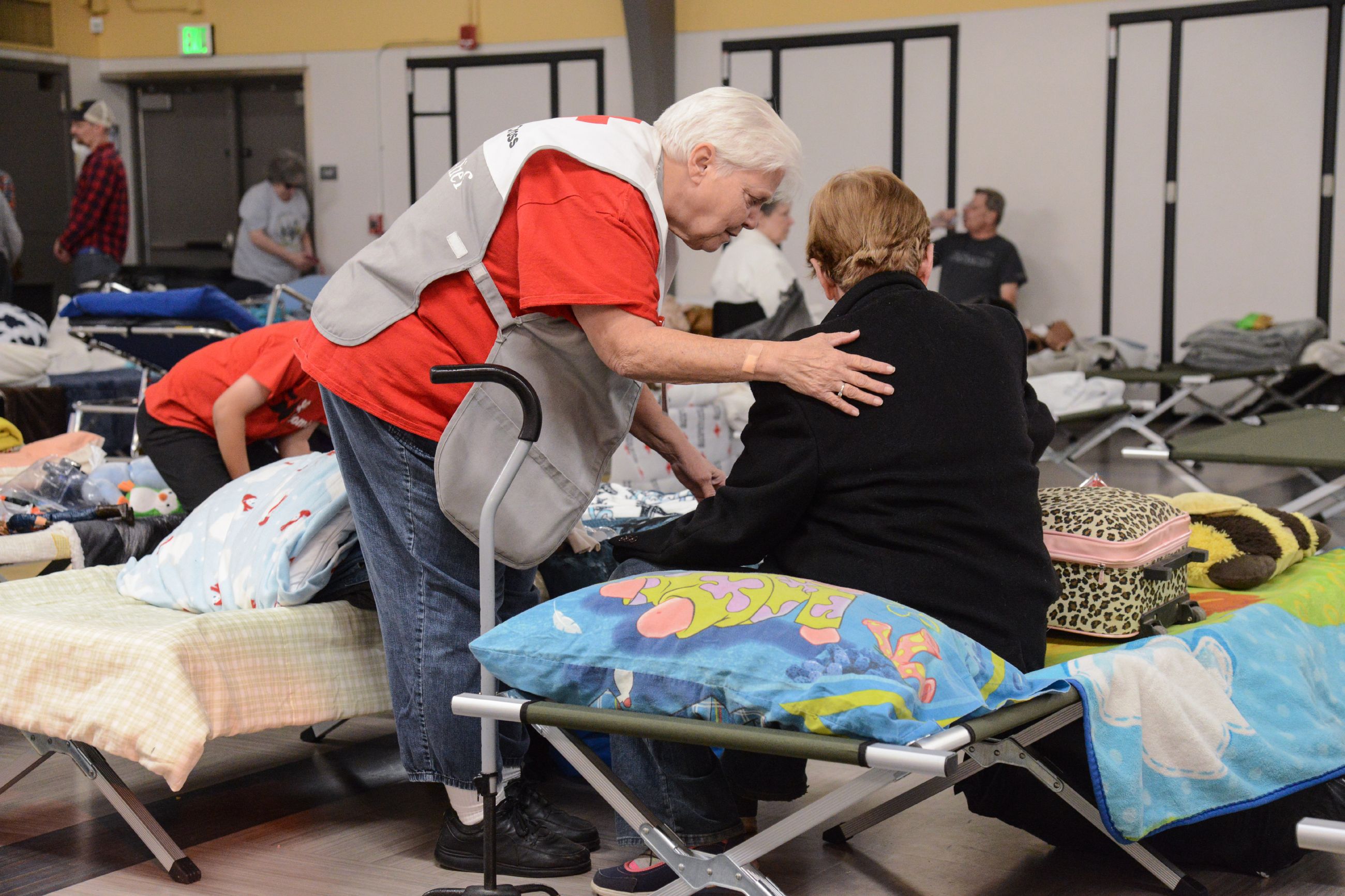By Gordon Williams

National Nurses Week runs from May 6-12 in 2019. The event honors the nation’s four million registered nurses — many of whom serve as volunteers or professionals with the Red Cross.
One such nurse is Lynn Jackson, who volunteers in Seattle at the King County chapter of the American Red Cross. Count up all her volunteer hours, and Lynn gives the Red Cross a lot more than just a single week’s worth of her time. She was recently honored at the King County Volunteer Recognition Ceremony for having put in over 500 hours at the chapter last year. Those 500-plus hours work out to more than 21 round-the-clock days. And that is in addition to Lynn’s day job as a labor and delivery nurse at Valley Medical Center in Renton WA, where she works two or three 12-hour days a week.
Further, many of Lynn’s volunteer hours have been spent not in Seattle, but on deployment.

She was first sent, as part of a Disaster Health Services team, to the swarm of wildfires that swept Northern California in October, 2017. Last July found her back in California at the Carr wildfire. The Carr fire destroyed more than a thousand homes, forcing thousands of residents into shelters.
Lynn’s normal job on deployment is providing disaster health services to evacuees from the event. “We are the people who make sure that residents in our shelters stay healthy,” she says. “If people have any medical needs, we address them.”

There is nothing new about nurses working with the American Red Cross. In fact, those ties go back to the earliest days of the organization. The Red Cross was founded in 1881 by Clara Barton, a battlefield nurse during the Civil War.
Red Cross nurses helped in a yellow fever outbreak in Florida in 1888, and helped survivors of the Johnstown PA flood that killed 2,000 people in 1889. The first wartime experience came in 1898 when the Red Cross recruited 700 nurses during the Spanish-American war. Thousands of Red Cross nurses worked during the worst medical disaster ever to hit the United States —the Spanish flu epidemic of 1918 that killed 700,000 people in this country.
Lynn did not start out planning to be a nurse. Her first area of study in college was industrial psychology, but then marriage and a family put her studies on hold. Only later, while living in Texas, did she decide on nursing as a career. While in nursing school, she taught Red Cross courses in First Aid, CPR (cardiopulmonary resuscitation) and AED (automated external defibrillation) to businesses — mostly petroleum-related — in the area. After graduation, her family moved to Tennessee where Lynn became an emergency room nurse.
Lynn’s first contact with the Red Cross, actually, was through her daughter. The girl was helping the Red Cross in Texas develop a lifesaving program for young teens as part of a Girl Scout project.
Lynn’s first work at a mass disaster was at Hurricane Katrina in 2005, while she was still in Texas. In that case, Lynn says, she did not have to deploy to the disaster scene. Rather, the disaster came to her. “We were right near the Texas-Louisiana border,” she says. “The people from Katrina were evacuated to us.”
Lynn was still in nursing school then, but she was asked to help provide health services at a Red Cross shelter. She was again asked to help out when Hurricane Rita stuck East Texas barely a month after Katrina.
In 2007, Lynn’s husband was transferred to Seattle. She went to work at Valley Medical Center, and eventually began volunteering in Disaster Health Services at the Seattle Red Cross. She quickly became one of the region’s most avid volunteers.

While any Red Cross job at a disaster scene can be challenging, the job for a health services nurse can be especially fraught. Those evacuated to shelters from the disaster zone are typically emotionally drained, and some are in poor health. Then all the residents are confined in pretty close quarters. “The result,” says Lynn, “can be a lot of viral and bacterial infections passed back and forth.”
“We look for any medical needs that should be addressed,” she says. “We make sure people take all the medications they are supposed to take. We make sure people stay healthy.”
It’s obvious what the Red Cross gains from having Lynn Jackson as a volunteer — the services of a skilled and dedicated nurse. Asked what she gains from the Red Cross, Lynn first mentions the satisfaction of being able to use her skills to help others. But she also mentions the friends she has made in all the hours she spends as a volunteer. “I’ve enjoyed deployment immensely,’ she says. “You work with such wonderful people and you make such good friends.”
The Red Cross needs more skilled nurses and medical professionals to join our ranks! Sign-up to volunteer: RedCross.org


